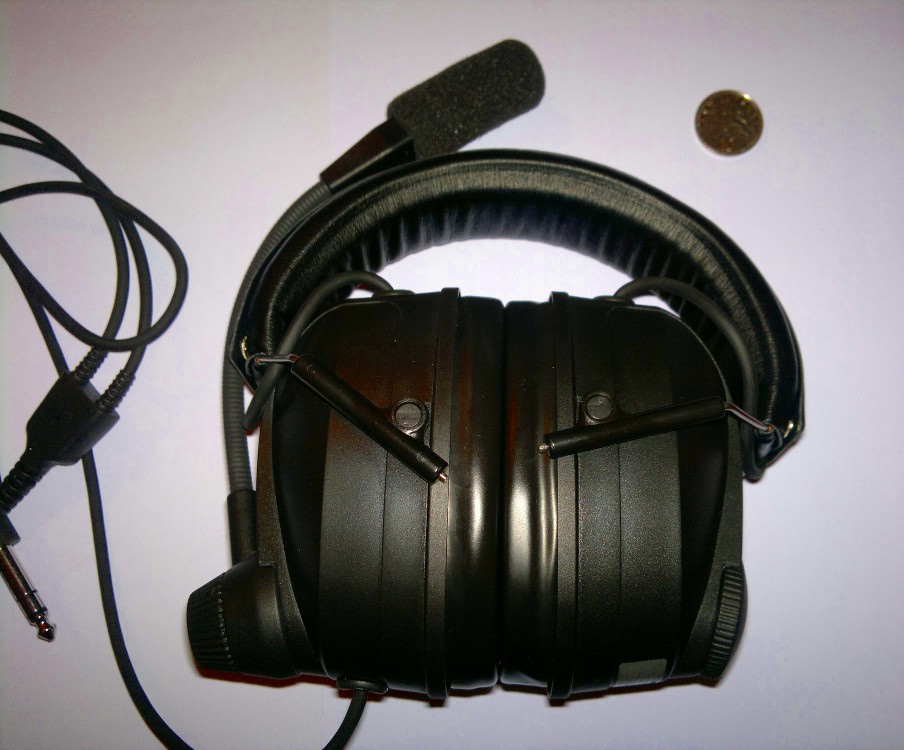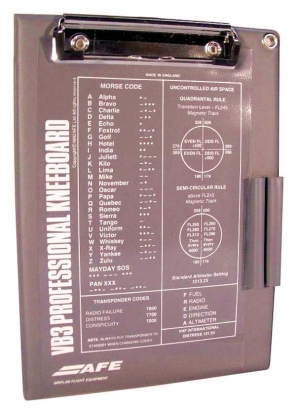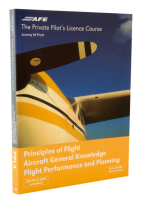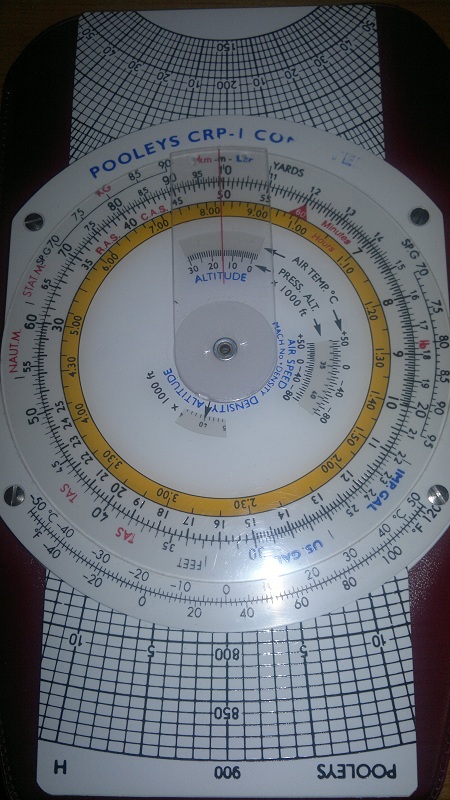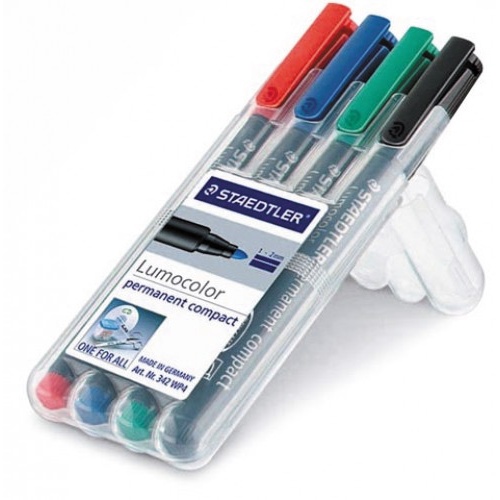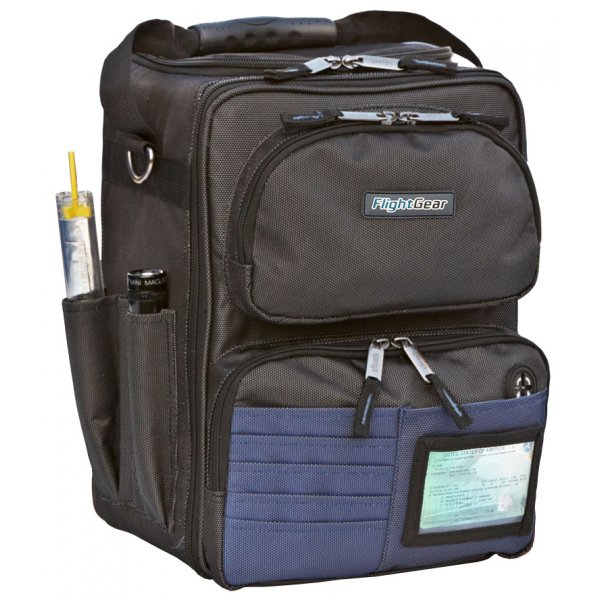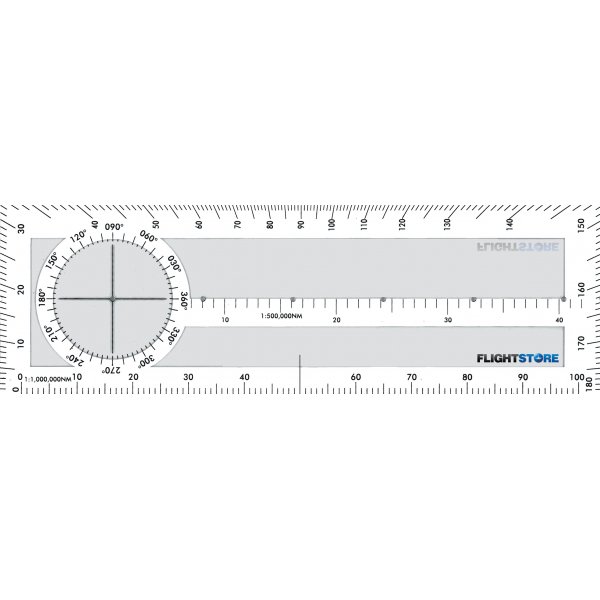On starting to train for a Private Pilots Licence (PPL), or even a National Private Pilots Licence (NPPL), you’ll quickly start assembling a list of stuff you might/probably/feel you need to get. Something along the lines of:
- Headset
- Kneeboard
- Chart
- Checklist(s)
- Hi-Viz Jacket
- Books/Guides
- Flight Computer
- Ruler/Pens
How to get all this stuff to/from the club and aeroplane???
Better add a Flight Bag to the above list then….
The truth, that possibly nobody will actually tell you directly, is this:
- When you’re first starting out, you actually need very little!!
Headset
For your first lesson you probably borrowed one off an instructor/club, you can do that for a little bit – but realistically, there’s no avoiding you need a headset.
Borrowed headsets are ok, but they tend to be well used, a bit battered the microphone pick-up often fussy and gets every other word etc.
You don’t need to spend mega money (relative to the cost of flying!), but my advice would be buy a headset as soon as you can – the 2nd or 3rd lesson ideally. £225-300 depending on what you go for will do the job nicely for the whole of your PPL (and beyond).
Like everyone, I debated long and hard between Sennheiser HME-110 Vs David Clark H10-13.4 and in the end the Sennheiser HME-110 won the day
I’ve had my Sennheiser HME-110’s now for about 4 years, they still look as good as the day I bought them and have never given me any grief. I’ve since bought a second pair for friends/passengers. If I could do it all again and I had the same budget, I’d buy the HME-110’s every time. This isn’t an advert and I’m not being paid, others I’m sure love their David Clarks – this is just my experience with my headset.
Kneeboard
Your mileage might differ, but I didn’t use a kneeboard until I started navigation. As you might also experience, friends and family may ‘support’ your new found flying hobby, by buying you reasonably priced gifts like kneeboards/charts etc. for birthday/Christmas presents. So you can end up with this stuff whether you wanted it or not!
I found that because nobody said “Right get your kneeboad out and write X down….” my kneeboard stayed in my flight bag until I started Navigation.
On the ground, even at a big airport like Cambridge you’ll only need to remember typically 4 pieces of information:
- Pressure setting to set your Altimeter to (QNH/QFE)
- ATIS Information Identifier (“On first contact report Information Zulu received” etc. – small airfields won’t have this).
- Taxi instructions (again small airfields it’ll be obvious and 1 way etc.)
- Surface Wind
You don’t need to write the pressure setting down, you’ve just set your altimeter to whatever it is (so read it back off that) – this has the added safety bonus that what you set on your altimeter, is what you read back.
If you can’t remember 1 word for the ATIS Information ID, are you sure you have the correct medical to go flying?
Taxi Instructions: Even at a big airport, it won’t be that complicated and at your base airfield you’ll soon find yourself always taxing one of 2-3 ways: Via Alpha or Charlie or the Grass etc.
Surface Wind: In the early lessons this won’t matter to you.
I fly with an AFE VB3 Kneeboard, it’s A5 sized and does the job.
Chart
You have to carry a valid and up to date chart by law, so you should have a chart before you first solo – but the law says you have to carry a chart, it doesn’t say it has to be yours. So you could always borrow the instructors at a pinch.
This means you don’t need a chart until ~10-15 hours into your training.
Be careful here, charts expire every year, if you’re flying every other weekend etc. then buying a chart on day one is likely to mean you’re going to be buying another before you ever get to use it.
Checklist(s)
At my aero club the checklist was just given to me and I assume is covered by the ground training fees the club charges students on starting training. Your club policies may be different…….there’s no escape from this, you need one.
Hi-Viz Jacket
A much debated topic, are they a good thing or a bad thing?
If your airfield requires one, you’ll find the above question is irrelevant and you need one and that’s the end of the discussion if you want to go flying! 🙂
Most clubs have spares, they’re cheap to buy (~£3-10) so when you get round to it I’d just buy your own, at least you’ll know it fits you etc.
Books/Guides
The PPL Guide books you’re going to need, there isn’t much avoiding that. However, unless you’re on some super intensive course, you’re not going to need them all at once so don’t rush out and buy them all in one big hit or as part of some “all in one study pack” you’ll be wasting your money.
You risk having spent £160 on books and the syllabus changing or if nothing else the shear vastness of all the books stacked up might put you off reading any of them.
Buy the ones you need for the immediate exams and maybe one or two at most more. Pass those exams and then get the next ones etc.
It can be fun to browse through the airfields near you in a VFR Flight Guide, but seriously you don’t need your own copy, at least not in training, as all licensed airfield charts are on the NATS website and your club/instructor will be able to provide you with the information for where you’ll go as part of your training etc.
I used to carry a VFR Flight Guide, just in case, it never came out of the bag – except at home on a rainy day. Post PPL, I still don’t carry a flight guide – though post PPL having a copy around is a good thing, so perhaps a skills test pass reward!
You won’t be landing anywhere except your base airfield until just before your Qualifying Cross Country (QXC) any way, so save the £26+, put the savings towards flying lessons 🙂
Flight Computer
I’d recommend you buy one of these earlier then you need it, not massively earlier, but maybe 5-7 hours into your training.
They’re good to have a play with early and on a rainy day when a lesson gets cancelled due to weather you can always then ask an instructor to run you through how to solve a certain problem you’re having. They don’t have anything else to do once your lesson is cancelled and in this scenario ground tuition is typically free – and you never know the weather might clear up while you calculate 🙂
Seriously though a lot of people struggle to get their heads around these archaic circular slide rules. This is the one bit of kit worth having earlier, rather then just in time for when you really require to use it.
Ruler/Pens, etc. etc.
However you carry it all, you’re going to need at least a pencil and pen to update your log book after each flight, general notes etc. any old pen that works will do but for pencils I strongly recommend you use a mechanical pencil (the last thing you need is the lead to break in the plane and be looking for a pencil sharpener!)
Mechanical pencils aren’t expensive, but I’d encourage you to not go super cheap, they’ll do your head in because you’ll find when the lead breaks you’re clicking like crazy to get the next batch of lead to load etc.
It sounds a bit daft to recommend a pencil, but I really like these from Staedtler (same company that make chart pens). They’re about £4-5, not going to break the bank and will probably last you the the whole PPL and beyond if you don’t lose it 🙂
When you need to draw on a chart (Navigation), so don’t rush out and buy a set on hour one or they’ll sit in your bag for quite some time!, then get yourself a set of Staedtler chart pens. Get the permanent ones, they’re not really permanent you just need a special eraser or spray to remove it, but they won’t easily rub off your chart on the move etc. – you only need 4 colours. Fine or Medium is a school of thought debate, I prefer the Fine nibs but other instructors I’ve flown with prefer medium because it gives you a thicker and arguably easier to see/harder to rub off line. My preference is to be able to see as much of the features/landmarks I can around my track – but at the cost that sometimes you do have to patch up the markings.
For what it’s worth I use the following colours
- Green : My route/track
- Blue : Wind direction/speeds (anything wind related)
- Black : General Information / Radio Frequencies and on a trickier Nav I use this to mark ’10 degrees off course’ marker lines.
- Red : I never use red – it can look too much like road features and other markings.
As I suggested above, with these pens, you’re going to need an eraser.
Ruler/Protractor
I started with a full size ruler, when it wouldn’t fit in to my newer flight bag (see below), I bought a ‘short’ ruler to replace it. The shorter ruler is good for 60 nautical miles, you’ll never in a PPL fly in a straight line for more then 60 nautical miles unless your QXC is something mad and is 1 way out and then returning (but most people fly a triangle type route and so each leg will be something like 50nm and even then they might include turns). You don’t need one until you get towards navigation, but when you do, consider the shorter version – I certainly prefer it.
I’ve found a square protector to do the job nicely and have had no reason to change it.
Flight Bag
When I started to learn to fly I read through some other PPL blogs and one of them, which I wish I could find again so I could give credit, said they hadn’t spent any money on a flight bag an instead just went to their local supermarket and bought a cheap laptop bag – it seemed to do the job.
So I did the same and sure enough, your typical laptop bag will easily carry a headset, pens, rulers and as you begin to require the other bits (Charts, Kneeboard etc.) this stuff will all reasonably fit in there too, including a VFR Flight guide I didn’t really need to be carrying.
You can spend anything you like on flight bags, from a £15 laptop bag to £150+ on a customizable purpose designed for aviation Brightline Flight bag (and anything in between).
Today (Post-PPL), I fly with a Sporty’s Mission Bag, it’s a bit of a love/hate flight bag. I’ll cover the pro’s and con’s of this bag in another post. In summary though, I wouldn’t really recommend it for someone starting a PPL – it’s good for a very specific flight type user, as a bag to carry everything for the duration of a course, it’s not really ideal. I’d recommend just going with a laptop bag for the course of a PPL, it’ll do the job nicely enough.
Other kit you might consider
‘Diversion Ruler’
In my training, diversions were one of my weaker areas, an instructor showed me a diversion ruler (not their official name, but you generally wouldn’t use them for on-ground planning) in flight and how much easier they make calculating a new track and distance even while flying. I kept meaning to get one, but never did. Today though I have one in my kneeboard and generally don’t leave the ground without it. In hindsight, I should have bought one earlier, once you’ve done your first or second dual-navigation and are beginning to think about learning/training for diverting is about the time to consider getting one of these.
GPS
You don’t need one, you can’t technically use it on the PPL and certainly can’t on the Skills Test. There’s an argument to say having one in the bag, just in case, is a good thing. Before I did my first local areas solo, I’d have agreed. But if you use it on your solo nav’s to recover your uncertainty of position (or to remove any risk of becoming uncertain), you might be setting yourself up for a shock when you cannot fall back on to it in your skills test.
Post PPL I still don’t carry a GPS, I enjoy getting from A to B by myself and the reward it brings for getting there without blindly following a route that ensures you can’t be caught out by wind etc. to much.
Cameras / Voice Recorders etc.
I started to fly with cameras & voice recorder in the plane around my first solo navigation, I still use them today as my flying has got more and more specific to short strips and I find watching and listening back to previous flights helps me spot bits I could have done sooner and checklist items I might keep missing etc. As a training aid, you’ll get back what you put into this sort of kit, but it can also take quite a lot of effort to reap the value (e.g. putting the video all together, syncing up the audio etc.).
During your training instructors may or may not want to be filmed, I never recorded a flight with an instructor as it seemed a bit strange to ask and if you’re learning, you probably couldn’t spot the errors you’ve made in the video anyway 😐
And the rest…..
There’s really no end to the kit you can buy: Life jackets, radio transceivers, watches, flight suits etc. etc. But I don’t think you’ll find any of that absolutely essential during your training and add up just the essentials above and you’ll have spent around £500. Hopefully this post has briefly discussed the major bits of kit to consider and perhaps given some recommendations you find useful.
